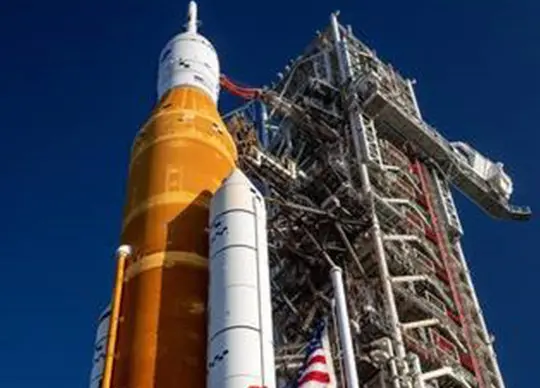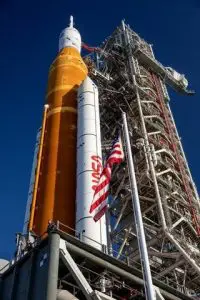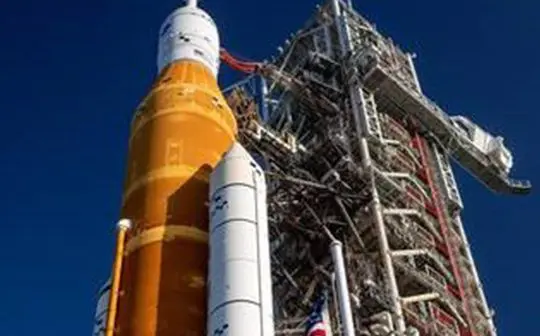

Image: NASA’s Space Launch System (SLS) rocket and mobile launcher, carried atop the crawler-transporter 2, are seen at Launch Pad 39B at the agency’s Kennedy Space Center in Florida. The agency intends to proceed with a single services contract model for long-term SLS hardware production and operations beginning after the Artemis IV mission in the 2026 timeframe. Credits: NASA.
As NASA prepares for the first integrated flight test of the Space Launch System (SLS) rocket and the Orion spacecraft to the Moon this summer as part of Artemis, the agency is moving toward a services contract model for long-term SLS hardware production and operations to reduce costs.
“SLS is not just a NASA investment, it has been a national investment. Through this contract approach, we are working to enable the use of this one-of-a-kind heavy lift capability to other customers,” said Kathy Lueders, associate administrator for the Space Operations Mission Directorate at NASA Headquarters in Washington. “This approach will also allow NASA to streamline SLS production and operations under one contract, creating a more affordable and sustainable exploration framework for decades to come.”
In a pre-solicitation notice for the Exploration Production and Operations Contract published Tuesday, NASA is proposing to transfer SLS production and associated testing, manufacturing, and transportation facilities from multiple existing hardware procurement contracts to a single launch service contract with Deep Space Transport LLC. Due to the proprietary nature of the processes for manufacturing of the SLS rocket, NASA does not expect to recover costs through competition associated with an alternate source’s design, development, and testing. The notice conveys NASA’s intended acquisition plan for a long-term SLS production and operations contract, to which industry may respond with feedback in accordance with the instructions in the pre-solicitation notice. An award is anticipated by Dec. 31, 2023.
The contractor would be responsible for producing hardware and services for up to 10 Artemis launches beginning with the Artemis V mission, and up to 10 launches for other NASA missions. NASA expects to procure at least one flight per year to the Moon or other deep-space destinations.
Spanning multiple centers and facilities, the NASA SLS workforce will continue to provide expertise for the first four Artemis missions and for future Artemis missions.
“We have a big job ahead of us to fly the first four Artemis missions and develop the new exploration upper stage,” said Jody Singer, center director of NASA’s Marshall Space Flight Center in Huntsville, Alabama. “While NASA transitions the contracting approach for long-term SLS operations, the talented team that brought the rocket to the launchpad will also be needed for other projects necessary for the agency’s exploration missions.”
NASA previously issued a request for information in October 2021 and conducted discussions with industry this year to gather inform the approach to maximize the long-term efficiency of the SLS rocket.
With Artemis, NASA will land the first woman and the first person of color on the lunar surface and establish long-term exploration at the Moon in preparation for human missions to Mars. SLS and NASA’s Orion spacecraft, along with the commercial human landing system and the Gateway in orbit around the Moon, are NASA’s backbone for deep space exploration. SLS is the only rocket that can send Orion, astronauts, and supplies to the Moon in a single mission.





